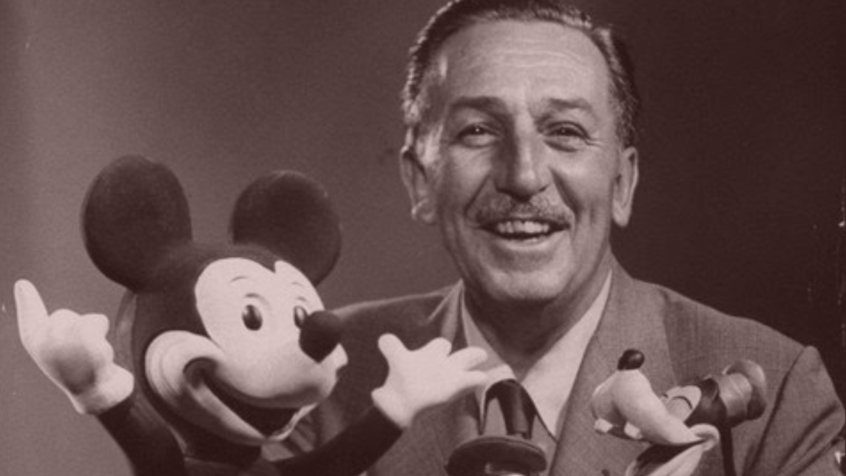The famous story of Walt Disney building Disney World gives us a clue to how the greats think.
He died before the park was completed. At the opening of the park his wife was asked if it was difficult knowing he didn’t get the chance to see the finished product. She said emphatically he actually had seen it. He saw it in his mind.
Disney World was impossible before it was possible. It was Disney’s ability to see it, to visualize it, that allowed it to come into reality. It’s now the world’s most visited amusement park, greeting 17 million people in 2022 according to Forbes.
The 3 mind problems that keeps us in the “impossible”
In my mental performance coaching work, I see 3 underlying problems with how people think that keeps them in the impossible, rather than the possible. This includes the highest of achievers.
The 3 problems are summed up as 1) non-resourceful beliefs, 2) limited identity and 3) unclear vision.
These problems are linear, meaning that our beliefs underpin how we see ourselves, which influences our ability to cast a vision of our future.
Non-resourceful beliefs
Psychology defines beliefs as convictions we trust as being true. As you’re reading this, you have tons of beliefs that you’ve formed over your lifetime. Most, if not the vast majority, serve you well. However, most of us also harbor those few that hold us back. They limit the potential that we have inside ourselves. Those beliefs are non-resourceful.
Anna Schaffner, Ph.D. from the University of Kent writes this about non-resourceful beliefs. She says it’s “based on childhood assessments, they are often untrue. They are also self-perpetuating. Like magnets, they attract evidence that makes them stronger, and they repel anything that might challenge them.”
This means that they are the engine from which the reset of our thoughts & emotions flow from.
Limited Identity
If we follow this like a chain, our beliefs are central to forming how we see ourselves. – i.e. our identity.
Dr Shahram Heshmat, of University of Illinois Springfield says that identities start to take shape from when we were children. “Children come to define themselves in terms of how they think their parents see them. If their parents see them as worthless, they will come to define themselves as worthless. People who perceive themselves as likable may remember more positive than negative statements.”
Further, we identify as part of a group or a characteristic. We’re an “athlete” or a “bookworm.” It can also have a ceiling. I’m smart, but not “Ivy League smart.” I’m an athlete, but not “the best athlete.”
Unclear vision
You can see how those “buts” in our identity create the limits of our ability to visualize our highest potential. We may want to do something, yet if our identity is someone who can’t do or shouldn’t do it or hasn’t checked the right box to do it, will not be able to see ourselves doing it.
Robert Martone, a research neuroscientist, writes in Scientific American that we use our imagination to visualize our future. He says we “journey into the future by imagining what tomorrow or next year might bring. When we do so, we think of ourselves as we are now, remember who we once were and envision how we will be.”
Therefore, however we see ourselves today informs the vision that we create for our future selves. Any current lack or where we perceive the edge of our potential will shape the world in which we create in our minds and thus the reality that we bring into the world.
In short, we might see only Central Florida swampland, and not Disney World.
Tap into your greatest “possibility”
Taking the lid off the future vision of yourself requires us to go back to beliefs.
We can do this by finding the edge of where your positive belief stops. It probably looks like “I can do this, this and this… but I can’t do that or go that far.”
Many of us have a deep seated belief around being “enough” or “worthy” of the greatest achievements. We’ll earn 6 figures, not a million; or earn a million, not 10 million. We can make the pros, not win the Super Bowl; or win a Super Bowl, not be MVP. The edges of our belief that will hold us back.
It takes doing the mental work to find that edge and challenge its truth. The truth is that it is possible. It takes you shifting your perspective on the belief from it’s not possible to it is possible and also possible for you.
From there, we can create a clear identity and imagine the biggest future from that clear identity.
The core framework of my private coaching practice is the “Path to Potential.” It takes you on the journey to release any non-resourceful beliefs and tap into the resources that you already have inside you. Using your best resources you actually create a clear vision of who you want to be. The vision drives you to take big action. The results can be achieved when you focus on that which you want, not what you don’t.
A client said this path “removes the blinders and makes things crystal clear. I’m going in that direction. It moves the impossible into the possible.”
Your greatest possibility is possible when you can see past the swampland and envision your Magic Kingdom. When you can truly see the mental image of it, you can make it reality.

